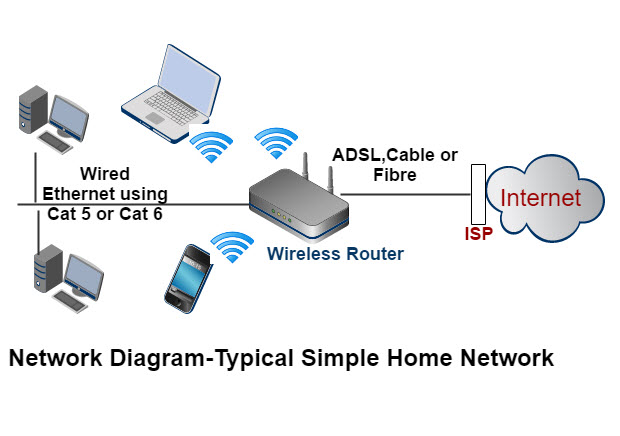Introduction
“Curb Your Enthusiasm,” created by Larry David, premiered on HBO in 2000 and has since become one of the most beloved and influential comedy series on television. Known for its improvisational style, biting humor, and the exaggerated depiction of social faux pas, the show has left an indelible mark on the comedy genre. This comprehensive article explores the show’s development, themes, characters, notable episodes, and its impact on television and popular culture from its inception to 2024.
Origins and Development
The Birth of the Show
Larry David, co-creator of “Seinfeld,” initially conceived “Curb Your Enthusiasm” as a one-hour HBO special in 1999. The special was a mockumentary about David’s return to stand-up comedy and the production of the special itself. Its success led HBO to greenlight a full series.
Concept and Style
“Curb Your Enthusiasm” is characterized by its unique blend of scripted and unscripted elements. Unlike traditional sitcoms, the show employs a loose narrative outline, allowing actors to improvise their dialogue. This approach creates a natural, spontaneous feel, contributing to the show’s distinct comedic style.
Production
The show’s production involves a small crew and minimal set design, often shooting on location in and around Los Angeles. The low-budget, guerrilla-style filmmaking gives “Curb Your Enthusiasm” an authentic, almost documentary-like quality.
Themes and Style
Social Norms and Etiquette
At its core, “Curb Your Enthusiasm” revolves around Larry David’s exaggerated version of himself navigating everyday social interactions and often failing miserably. The show explores themes of social etiquette, awkwardness, and the minutiae of human behavior, highlighting the absurdity of societal norms.
Moral Ambiguity
Larry David’s character is often portrayed as a morally ambiguous figure, unapologetically selfish, stubborn, and blunt. This portrayal allows the show to delve into ethical dilemmas and the gray areas of right and wrong, often leading to hilarious yet thought-provoking situations.
Improvisation
The improvisational nature of the show sets it apart from traditional sitcoms. Actors are given the freedom to explore their characters and react naturally to situations, resulting in spontaneous and unpredictable comedy.
Recurring Themes and Catchphrases
“Curb Your Enthusiasm” is known for its recurring themes, running gags, and catchphrases. Phrases like “pretty, pretty, pretty good” and “having said that” have become iconic, contributing to the show’s cultural impact.
Main Characters
Larry David (as Himself)
Larry David, the show’s protagonist, plays a fictionalized version of himself. His character is a successful yet neurotic television writer and producer who constantly finds himself entangled in social and personal conflicts. Larry’s lack of filter and inability to conform to societal expectations drive much of the show’s humor.
Cheryl David (played by Cheryl Hines)
Cheryl is Larry’s patient and understanding wife, often serving as the voice of reason amidst Larry’s antics. Her character adds balance to the show, providing a grounded counterpoint to Larry’s eccentricities. Cheryl Hines’ portrayal has been praised for its warmth and authenticity.
Jeff Greene (played by Jeff Garlin)
Jeff is Larry’s loyal but flawed manager and best friend. Jeff Garlin’s character is often complicit in Larry’s schemes, providing comedic relief and supporting Larry through various misadventures. His relationship with Larry is central to the show’s dynamic.
Susie Greene (played by Susie Essman)
Susie, Jeff’s fiery and foul-mouthed wife, is a fan-favorite character known for her explosive temper and sharp tongue. Her confrontations with Larry and Jeff are some of the show’s most memorable moments, adding a layer of intensity and humor.
Leon Black (played by J.B. Smoove)
Leon, who joins the show in Season 6, is an unexpected yet perfect addition to the cast. His carefree attitude and unconventional wisdom provide a stark contrast to Larry’s neuroses, creating a unique and hilarious dynamic.
Notable Recurring Characters
Richard Lewis (as Himself)
Richard Lewis, a comedian and Larry’s longtime friend, frequently appears on the show. Their on-screen chemistry and banter reflect their real-life friendship, adding authenticity and humor to their interactions.
Ted Danson and Mary Steenburgen (as Themselves)
Ted and Mary play fictionalized versions of themselves, often serving as foils to Larry. Their appearances add star power and provide interesting narrative threads.
Marty Funkhouser (played by Bob Einstein)
Marty Funkhouser, another one of Larry’s friends, is known for his dry humor and oddball personality. Bob Einstein’s portrayal adds depth to the ensemble cast, contributing to many memorable scenes.
Memorable Episodes and Story Arcs
Season 1: Establishing the Premise
The first season of “Curb Your Enthusiasm” sets the stage for the series, introducing viewers to Larry’s world and his unique brand of comedy. Notable episodes include “The Pants Tent,” where Larry’s wardrobe malfunction leads to a series of misunderstandings, and “Beloved Aunt,” which features a hilarious typo in an obituary.
Season 4: The Producers
Season 4 features one of the most acclaimed story arcs, where Larry lands a role in Mel Brooks’ Broadway production of “The Producers.” The season finale, “Opening Night,” showcases Larry’s chaotic debut, blending comedy with genuine theatrical tension.
Season 7: The Seinfeld Reunion
Season 7 is a standout season, featuring a much-anticipated “Seinfeld” reunion. The meta-narrative involves Larry attempting to reunite the “Seinfeld” cast for a special episode, providing nostalgic moments for fans and insightful commentary on the legacy of “Seinfeld.”
Season 9: Fatwa!
In Season 9, Larry’s decision to write a musical about the fatwa issued against Salman Rushdie leads to a series of outlandish and politically incorrect situations. The season explores themes of political correctness and artistic freedom, maintaining the show’s signature irreverence.
Season 11: The Watermelon
Season 11 continues the show’s tradition of tackling contemporary issues through Larry’s perspective. The episode “The Watermelon” delves into themes of racial sensitivity and cultural misunderstandings, exemplifying the show’s ability to blend humor with social commentary.
Impact and Legacy
Influence on Comedy
“Curb Your Enthusiasm” has had a profound impact on the comedy genre. Its improvisational style has influenced other shows, such as “The Office” and “Parks and Recreation.” The show’s willingness to explore uncomfortable social situations has paved the way for more daring and boundary-pushing comedy.
Cultural References
The show has become a cultural touchstone, with references and catchphrases permeating popular culture. “Larry David moments” are now shorthand for socially awkward encounters, and the show’s theme music is instantly recognizable.
Awards and Recognition
“Curb Your Enthusiasm” has received numerous accolades, including multiple Primetime Emmy Award nominations. Larry David’s writing and performance have been consistently praised, solidifying his status as a comedy icon.
Influence on Other Media
The success of “Curb Your Enthusiasm” has extended beyond television. The show’s influence can be seen in various forms of media, including podcasts, stand-up comedy, and even social media, where Larry David’s persona continues to be a source of humor and inspiration.
Evolution of the Show
Changes in Tone and Style
Over the years, “Curb Your Enthusiasm” has evolved in tone and style. While the core elements remain the same, the show has become more refined and polished, with higher production values and more intricate storylines.
Introduction of New Characters
The introduction of new characters, such as Leon Black, has kept the show fresh and dynamic. These additions have brought new comedic perspectives and interactions, enriching the overall narrative.
Addressing Contemporary Issues
The show’s ability to address contemporary social and political issues has kept it relevant. Episodes dealing with political correctness, gender dynamics, and cultural sensitivity reflect the changing societal landscape, demonstrating the show’s adaptability and relevance.
Behind the Scenes
Larry David’s Creative Process
Larry David’s creative process is integral to the show’s success. His meticulous attention to detail and commitment to authenticity drive the show’s unique style. David’s hands-on approach, from writing to directing to acting, ensures a cohesive vision.
Cast Chemistry
The chemistry among the cast members is a key factor in the show’s appeal. The actors’ ability to improvise and play off each other creates a natural and engaging dynamic. Behind-the-scenes camaraderie often translates to on-screen chemistry, enhancing the viewer’s experience.
Guest Stars and Cameos
“Curb Your Enthusiasm” has featured numerous guest stars and cameos over the years, adding star power and variety to the show. Notable guest appearances include Jon Hamm, Michael J. Fox, and Lin-Manuel Miranda, among others.
Critical and Public Reception
Early Reception
The early seasons of “Curb Your Enthusiasm” received critical acclaim, with reviewers praising its originality and Larry David’s performance. The show’s unconventional format and willingness to push boundaries resonated with audiences and critics alike.
Sustained Popularity
Over the years, “Curb Your Enthusiasm” has maintained its popularity, consistently attracting high viewership and critical praise. The show’s ability to evolve and stay relevant has contributed to its longevity.
Criticism and Controversy
Despite its acclaim, the show has faced criticism and controversy, particularly for its politically incorrect humor and provocative themes. However, these elements are often seen as part of the show’s charm and boldness.
Fan Community and Cultural Impact
Online Communities
“Curb Your Enthusiasm” has a dedicated fan community, with numerous online forums, fan sites, and social media groups. Fans engage in discussions, share favorite moments, and create memes, contributing to the show’s cultural impact.
Merchandising and Paraphernalia
The show’s popularity has led to a range of merchandise, including DVDs, apparel, and memorabilia. Iconic catchphrases and moments are often featured on products, allowing fans to celebrate their love for the show.
Academic and Critical Analysis
“Curb Your Enthusiasm” has been the subject of academic and critical analysis, with scholars examining its themes, narrative structure, and cultural significance. The show’s unique approach to comedy and social commentary makes it a rich subject for study.
Future Prospects
Potential Spin-offs and Revivals
There have been discussions about potential spin-offs and revivals, though no concrete plans have been announced. The show’s format and characters provide ample opportunities for exploring new narratives and perspectives.
Legacy and Influence
As “Curb Your Enthusiasm” continues to influence new generations of comedians and creators, its legacy is secure. The show’s impact on the comedy genre and popular culture ensures that it will be remembered as a groundbreaking series.
Ongoing Relevance
Even as television landscapes change, “Curb Your Enthusiasm” remains relevant, reflecting and satirizing contemporary issues. Its blend of humor, improvisation, and social commentary keeps it fresh and engaging for both longtime fans and new viewers.
Conclusion
From its inception in 2000 to its continued success in 2024, “Curb Your Enthusiasm” has established itself as a seminal work in the comedy genre. Larry David’s vision, combined with the improvisational talent of the cast, has created a show that is both hilarious and insightful. Through its exploration of social norms, moral ambiguity, and the absurdity of everyday life, “Curb Your Enthusiasm” has left an indelible mark on television and popular culture. As it continues to evolve and entertain, the show’s legacy will undoubtedly endure, influencing and inspiring future generations of comedy lovers.









